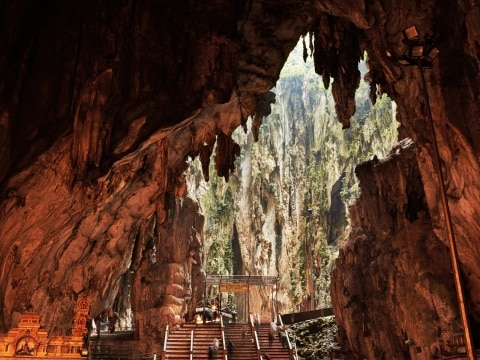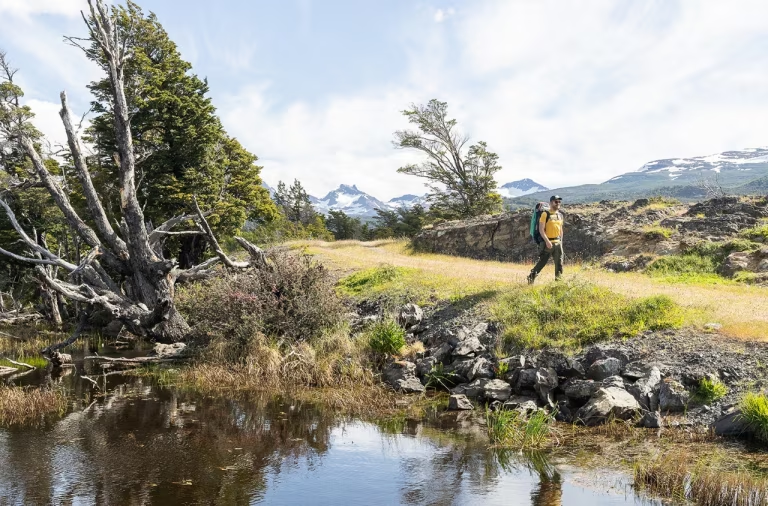The Most Magical Caves and Grottoes in the World

Batu Caves, Malaysia
1/23Batu Caves, near Kuala Lumpur, house a series of temples, including a Hindu shrine dedicated to the warrior god Murugan in the main Temple Cave. Worshippers visit for the annual Hindu Thaipusam festival and adventurers come for the rock climbing and spelunking.

Blue Grotto, Croatia
2/23When the sun hits the water at just the right angle, this limestone sea cave on the island of Biševo is bathed in a glowing blue light. It’s reached by boat and the optimum time to visit is between 11am and midday when the aquamarine colour is at its best and objects in the water appear silver. No swimming is allowed.

Benagil Sea Cave, Portugal
3/23This sea cave is one of the most recognisable on the Algarve coast of Portugal. It’s located on a beach in the village of the same name and the distinctive hole in its roof makes it particularly photogenic.

Eisriesenwelt, Austria
4/23Translating to “World of the Ice Giants”, Eisriesenwelt, south of Salzburg, is the largest known ice cave in the world, and its labyrinth of chambers stretches for more than 40 kilometres into the mountainside.
Gruta do Lago Azul, Brazil
5/23There are two caves at the Gruta do Lago Azul Natural Monument in Bonito, Brazil. The cave after which the area is named translates as Blue Lake Grotto, and has a subterranean lake which takes on a deep, saturated blue colour for six months of the year.
Fingal's Cave, Scotland
6/23On the uninhabited island of Staffa, the remarkable Fingal’s Cave was formed from hexagonal basalt columns from an ancient lava flow some 60 million years ago. When seas are calm, you can enter the cave on foot via the fractured columns.
Kamchatka ice caves, Russia
7/23These remote ice caves were formed by volcano-fed hot springs which melted tunnels in an icefield on the Kamchatka Peninsula. The caves were only discovered in 2012 by expeditioners to the Mutnovsky Volcano. The enthralling colours that gleam through the vaulted caverns of the roof are a magical trick of nature conjured by refracted light.
Green Grotto Caves, Jamaica
8/23Named for the green algae covering their walls, these caves have had a colourful history – they were a hideout for the Spaniards in the 17th century and a government storeroom for rum during the Second World War. They were the underground base of villain Dr Kananga in the James Bond film Live and Let Die.
Blue Caves, Greece
9/23The island of Zakynthos is most famous for Navagio (shipwreck) Beach; however, it’s also home to the beautiful Blue Caves, so named because of the colour of the water in the natural limestone formation. It’s caused by light refracting off the white walls and sandy floor.
Frasassi Caves, Italy
10/23The Frasassi karst limestone cave system, near Ancona in central Italy, is 13-kilometres long and has two chapels – the oldest of which, the Sanctuary of Santa Maria infra Saxa, dates to 1029.
Hoyo Negro, Mexico
11/23This incredible underwater cave on the Yucatan Peninsula is historically significant – the oldest complete skeleton of its kind (that of a teenage girl dating back 12,000 years) was discovered here, as well as bones of prehistoric animals such as sabre-toothed tigers. The girl, nicknamed Naia, is thought to have fallen into the network of caves when they were mostly dry.
Skaftafell ice caves, Iceland
12/23These ice caves are formed annually by melting glacial waters under the Vatnajökull ice cap, which covers eight per cent of the country. After heavy rain, the walls of the cave appear an ethereal blue.
Blue Grotto, Italy
13/23This natural sea cave on the island of Capri can only be entered when the tide is low and seas are calm due to the small size of the cave mouth (two metres wide but only one metre high). Skippers navigating wooden rowboats ask passengers to lie down as they guide their crafts inside the grotto.
Marble Chapel, Chile
14/23Over the last 6000 years, the waters of General Carrera Lake in Chilean Patagonia have slowly carved these unusual tunnels and shapes to form Marble Chapel, along with Marble Cave and Marble Cathedral.
Ik Kil, Mexico
15/23Near Chichén Itzá on the Yucatán Peninsula, Ik Kil is a 26-metre-deep sinkhole with a 60-metre-wide swimming hole at the bottom. Sacred to the Mayans, Ik Kil was used for rituals and relaxation. Now, a carved stairway leads down to a swimming platform and the cascading vines and waterfalls make it a scenic spot to cool off.
Carlsbad Caverns, United States
16/23In the Guadalupe Mountains in New Mexico, the Carlsbad Caverns have numerous chambers, many of which were first explored and named by an adventurous 16-year-old cowhand, Jim White, in 1898. The largest is The Big Room at 33,210 square metres.
Reed Flute Cave, China
17/23This natural limestone cave in Guilin is more than 180 million years old and is full of interesting rock formations and inscriptions dating back to the eighth-century Tang Dynasty. Also known as “The Palace of Natural Arts”, its caverns are artificially lit with an array of colourful lights.
Melissani Cave, Greece
18/23On the island of Kefalonia in the Ionian Sea, Melissani Cave is surrounded by lush forest and when the midday sun hits the lake, the whole gorgeous spectacle is bathed in a blue light. Rediscovered by speleologist Giannis Petrochilos in 1951, it is also known as the Cave of the Nymphs; artefacts have been uncovered here, including a clay figure of Pan and a disc depicting nymphs, dating to the third century BCE.
Mendenhall Glacier ice caves, United States
19/23There are a series of ice caves inside this 22-kilometre-long Alaskan glacier, with the best known situated on the west flank. It’s only for serious adventurers as it requires a long hike or strenuous paddle on a kayak, and when you get there the cave may well collapse, but this melting cavern is an icy beauty.
Phong Nha Caves, Vietnam
20/23This impressive cave system in Phong Nha-Kẻ Bàng National Park includes Hang En, the third-largest cave in the world, and Sơn Đoòng, which has the largest known cave passage in the world by volume, at more than five kilometres long and 200 metres high.
Waitomo Glowworm Caves, New Zealand
21/23On the North Island, the Waitomo River runs through this grotto which is home to Arachnocampa luminosa – a fungus gnat endemic to New Zealand. The glow-worms cover the roof of the cave and their natural bioluminescence creates a magical atmosphere.
Three Sisters Wilderness ice caves, United States
22/23There are numerous glaciers and ice caves in the hiking and camping wilderness of central Oregon. This ever-changing wonder formed over Whychus Creek near Camp Lake.















